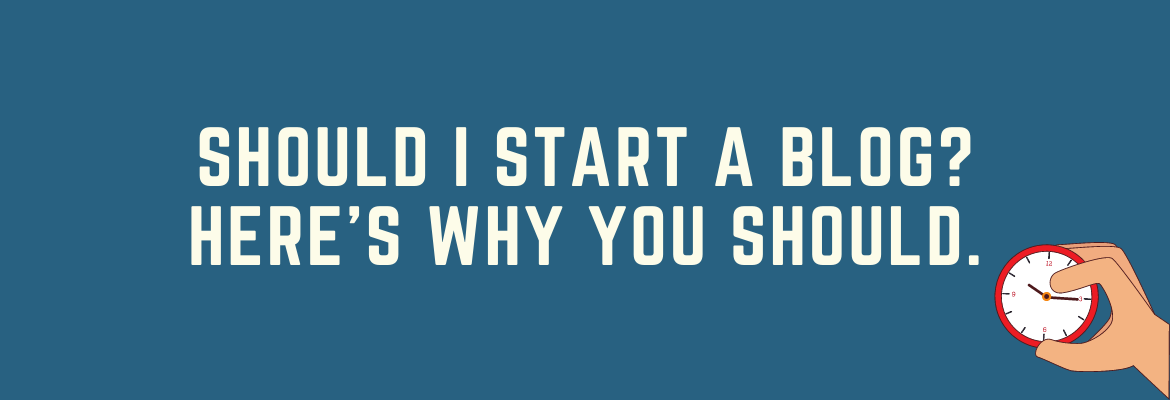Here is your guide on how to optimize your content for SEO. There's something missing here: most "gurus" would advise "link building" thru guest posting.
I haven't done that ever since but I got to page 1, position 1 rankings nonetheless. So yes, you may do it but I didn't include it since I personally don't practice it.
Read on.
How To Optimize Your Content For SEO
Factor No. 1: Long-Tail Keywords
Remember long-tail keywords from Level 1?
A long-tail keyword uses 3 to 5 (or more) keywords instead of a broad topic. Usually, you can easily get Page 1 rankings for questions, long phrases, and keywords that have “intent” or keywords that real people would actually type in Google.
If you do not remember how to find long-tail keywords, go back to the lesson. It's very important!
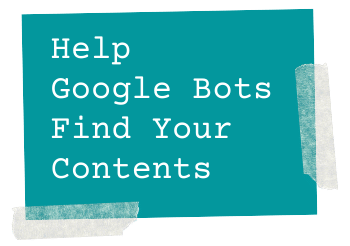
Factor No. 2: Internal Links

Internal links are links that point to any part of your site.
For example, try to click on this link → “Start your blogging journey here.”
You’ll see that by clicking the link, you will go to my Courses page. Google loves internal linking. You should often do it.
If you have been to my blogging fund posts, notice the lower part and side bar. There are “Related Posts” section which is done using a plugin.
Although it is a useful add-on, it is advisable to put your internal links in texts or images within your post. Like this.
Let's practice to do that by creating a draft post. Go to your WordPress dashboard, select +New > Post.
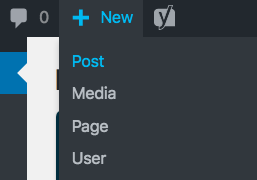
Create a "Paragraph block" by clicking on the + button, then "Paragraph."
Type anything. Underline a word or phrase and click on the "link icon."
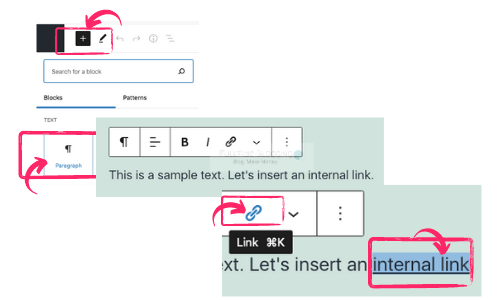
Internal links will link all your contents together. If Google bots visit one of your posts or pages, and there is an internal link, it will visit that page next. And it will keep on going through all the internal links, until you point it to an external link.
Make sure that clicking on your internal link will not make your visitors (bots or humans) leave the existing window.
Keep the “open link in a new tab” unticked as per the photo below.
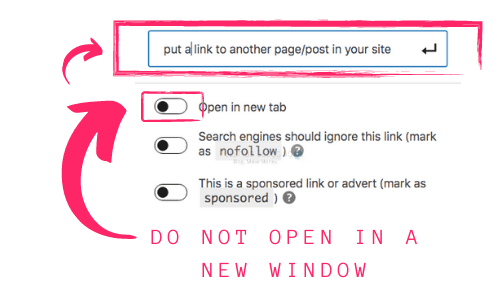
How To Get To The Top Of Search Engines (a.k.a. Ranking Your Post)
Google. Bing. Yahoo. These are just some of the search engines people use when looking for information on the internet. We want to get to the top of search engines hoping they will click on our post and read it.
When you try to get to the top, you are trying to “rank” your article. Page 1, position 1 - the spot we should aim for. Most of the time, just being on page 1 is already good enough.
Here are some of the most important things you should take note of to be on top.
Factor No. 3: Content
Content Is King. Cliche right? But it’s true. Content will take your blog to heights. Producing quality contents will never be out of the norm.
In instances when there is nothing much to talk about the topic, a minimum of 500 words is the least you should aim for.
Typically, you should target at least 750 to 2,000 words. More is good, but it can also bore visitors who are not interested in reading long posts.
In that case, you can vary your “content.” Upload or embed a video related to the topic. You can also create images or infographics to break the monotony of texts.
Talk naturally. Communicate to your audience as if you are just talking to a friend. Not all of your visitors are fluent in English. Talk in plain English as much as possible. Avoid highfalutin words or words that are not easy to understand.
Proofread when you are done writing. There is a free version of Grammarly. It can help you spot basic spelling and grammar mistakes in your writing.
Keywords
All the words in your article can be a keyword, but to help search engines figure out what your overall topic is all about, you need to define what your main keyword is.
Put Your Keyword Where It Belongs
Put The Long-Tail Keyword In The Title (And URL)
It is essential that your long-tail keyword is in the title. Putting your long-tail keyword in the title will automatically put it in the URL of your post, too.
Let's practice. Create a practice post title and publish the post.
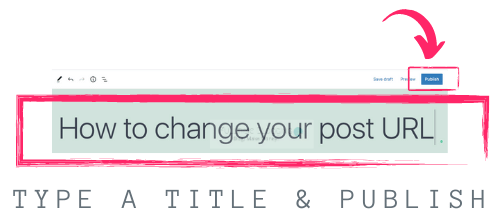
If your title (headline) is too long, you need to delete the irrelevant words and just retain the target keyword in the slug (URL).
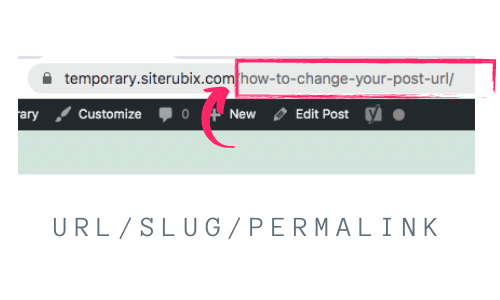
While it is not a necessity to have a clean slug, it is the first contact point of the bots to your content. You should just clean it up by retaining the long-tail keyword only.
You can do this this prior to publishing. But if you have already published the post, you can select "Edit."


Scroll down to the Yoast SEO and look for the "Slug." Type your long-tail keyword there and re-publish (update).

Again, it is not a necessity to have a shorter slug but it's easier to understand what your main target keyword phrase is.
Example:
Long-Tail Keyword: Product A Vs Product B
Headline: Product A Vs Product B - Here's A No-Brainer Guide Why You Should Choose The Latter
In the example above, you should just clean up your slug so that you URL only becomes like this:
yourwebsitename.com/product-A-Vs-Product-B
instead of:
yourwebsitename.com/product-A-Vs-Product-B-Heres-A-No-Brainer-Guide-Why You-Should-Choose-The-Latter
The cleaner one is for the bots, while the headline is for the real users. Both are important but you can give a nice headline without cluttering your URL.
If you have already published your article and want to change the slug, the Yoast SEO will automatically redirect your old URL to your new URL.
If you deleted the post instead, it's gonna return a 404 or "Page Not Found" warning.
In order to avoid this, you need to use a Redirection plugin (separate lesson) so that your deleted post URL can go to another link (and will not leave the bots and your human readers) to a dead end.
A dead end is a poor user experience signal. A good user experience (for both bots and humans) is a ranking factor.
Put The Long-Tail Keyword In The First Paragraph
Try to sound natural while incorporating your keyword in the first paragraph. If it doesn’t seem right, don't force it. Use another good keyword that meant the same (a.k.a. semantics).
Put The Long-Tail Keyword In An H2
Use your keyword just once in a heading, preferably in H2. Keyword-stuffing is a no-no. Just use it if it sounds appropriate.
To create an H2, select +, then Heading.
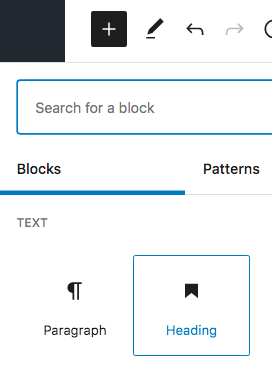
Type the long-tail keyword.
To convert your keyword to an H2, highlight the words. Go to the upper part of WordPress or Google Docs formatting styles and click on Heading 2 or H2 to convert the words to an H2.

Put Keywords In The Alt Text Of An Image (only if applicable)
You should have at least one image in your post. File-naming it with your keyword will not work. You should put it in the "alt-text."
It's crucial that you keep an eye on the image details and make every effort to ensure they are as optimized as possible.
Image alt texts/tags: Make sure that you have an alt tag on every image. Search engines can't "see" your images, so it's important to give them a text description of what the image is.
Note: For each alt tag/text, be as descriptive as possible but don't go overboard or include unnecessary words.
Let's practice how to do it.
Select + then "Image" to create an image Block.
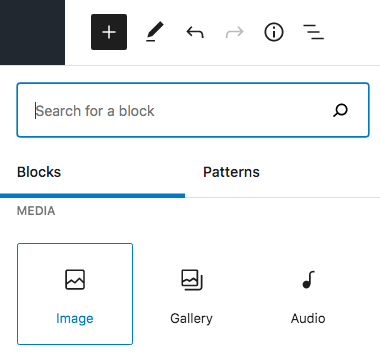
Upload an image to your Media Library.

Click on the image to reveal settings on the right. Look for the "alt-text" section and place your long tail keyword (or image description if long-tail keyword is not applicable) there.
See the picture below.
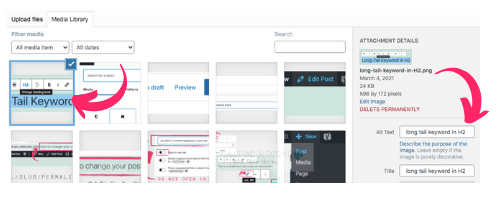
Factor No. 4: External Links
When you do external linking, make sure to link to an “authority website” or a high-quality site that is respected by knowledgeable people in that industry.
I did not practice external linking in my baby product reviews for firsttimeparentguide.com. The main reason is that my reviews are either from using the product or research-based opinion.
I did not see the need to link to “authority sites” which are usually my competitors. Without externally linking, I still did manage to get lots of my reviews to Page 1.
Trying to rank by external linking will only work when used appropriately, like how I link to Wikipedia so you can learn more about the terminologies.
Factor #5: Comments And Other Forms Of Engagements Such As Sharing Your Post And Doing Whatever You Ask Your Audience To Do
Comments
If you ask your visitor to engage in your post, and they do, it sends a strong user signal to Google which is good for ranking.
At the end of your post, ask people to leave a comment, question, or their thoughts about your article.
You can join targeted Facebook groups and other social media platforms to share your content and ask for comments. Normally, blogging groups help each other with comments.
Make sure to only approve relevant comments, like asking questions and clarifications.
I have several students in my e-mail list. I ask them to leave the comments in the lesson instead of sending me questions thru e-mail or chat.
People are generally shy to be the first to ask questions or leave their opinion. When they see that there are already existing comments and that you reply to each and every one of them, your readers will feel comfortable engaging, too.
Comments are contents, too! You can get ranked for questions you answer. Instead of simply replying "thank you for your comments," elaborate further. Explain your point and therefore add value to your content.
Wealthy Affiliate has a Site Comment platform where you can ask members to ask a question about your content. This way you can further improve your content by answering their questions thoroughly.
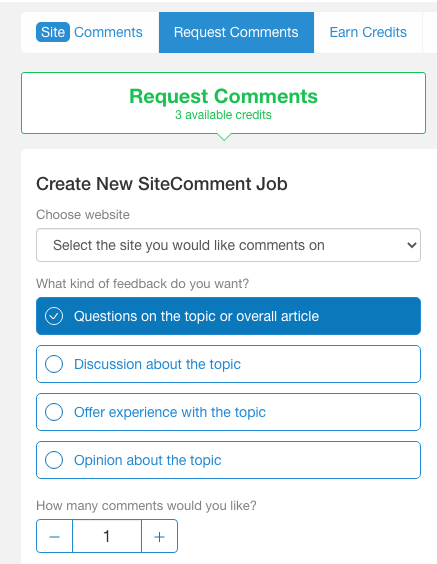
Check out the site comments!
Social Media
Depending on your niche, choose where to share your article.
It will be weird if I share my baby product reviews in my Linkedin account - only because my "network" there are all from the post-production or visual effects industry.
To be safe, create a social media account dedicated to your website's blog posts sharing.
That way, when you share posts, it will look appropriate and targeted. A Facebook page is a good start.
If you are not very social like me, you can join to targeted Facebook groups as explained in this lesson, and share your contents there instead.
Choose the best 2 or 3 social media sites that you are willing to be "active" in. Sharing is just 50% of the job, engaging is another half of the story.
As we all know, social media can be very distracting.
If you find it taking too much of your time and your content creation is suffering because of it, consider minimizing your social media efforts (or just invest in a social media automation tool once you already have a steady blogging income).
Remember, content first.
Factor #6: Make Your Audience Stay Longer In Your Site
There are several ways to make your audience consume more of your content.
The first one is by embedding a relevant YouTube video. Next, you should format your paragraph so they are short and easy to read.
I'd usually don't go over 4 lines since it's gonna be a pain to read in a mobile device. 4 lines of paragraphs in desktop view is 8 lines at least in mobile view.
Don't put so much ads, especially those that take up the whole screen (pop-up ads!). It's going to annoy your readers which can result in a high bounce rate (bounce rate: they will leave or bounce away).

Questions? 🙂 Leave them below!



